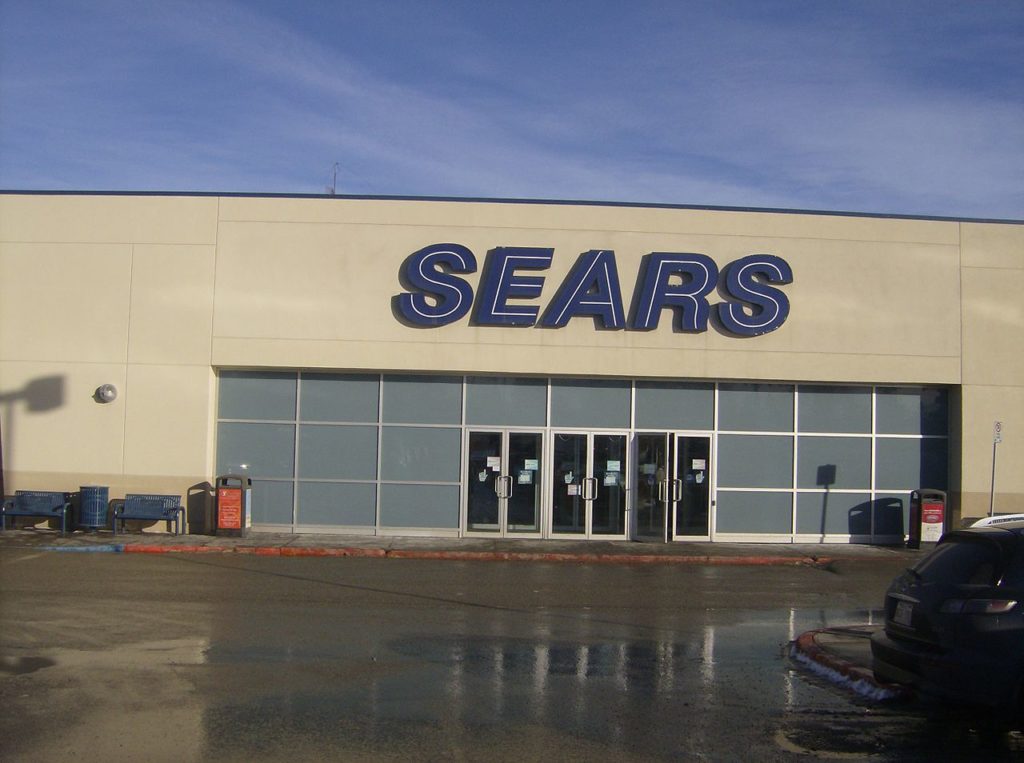IBM is one of the few companies that has been around for over a century. Sears is another one, having been started in 1886, but now in Chapter 11 bankruptcy, there is some doubt that the retail giant will be around next year, let alone next decade. (By the way, interesting side note, Sears accidentally was huge at fighting racial inequality). What is interesting with both companies is that their respective markets changed a lot, and for decades both survived the changes. But, in the early 1990s, IBM almost went under and Sears has been on the path to failure for over a decade now. The difference is that IBM was able to pivot, and Sears wasn’t—with the biggest irony being that Amazon, the firm that is basically putting Sears out of business is more like the Sears I grew up with than the Sears of today.
Both firms were put at risk because of an inability to pivot back to what each, at one time, did best. While IBM figured this out, Sears didn’t (or at least hasn’t yet), and I think it comes down to a couple key differences.
Thomas Watson Jr.
One of the core tenants to Thomas Watson Jr.’s tenure at IBM was his stated belief that, to survive, a company had to be willing to change everything but what they were. For IBM, that core tenant that has remain unchanged is honesty, integrity, a focus on customers, and an emphasis on strong execution. When IBM almost went under, it was largely because they’d sacrificed the honesty and integrity part and taken their focus off of customers and put it on revenue growth at almost any cost.
I don’t see an equivalent to a Thomas Watson Jr.-like sustaining policy at Sears. Plus, a lack of CEO training inside the company, which likely goes to why that firm lost its way.
The Cyclical Nature of Markets
For IBM the interesting change has been from mainframes, where everything was centrally secure, to the cloud where everything is again centrally secure. Where IBM screwed up is they appeared to agree mainframes were dead back in the 1980s and didn’t anticipate the market would come back around. However, they eventually corrected this, and their mainframe is arguably the most profitable and successful hardware product they currently sell. In addition, the same basic capability they had with a centralized mainframe solution is equivalent to the cloud today and while Amazon did initially catch them flat footed, they recovered nicely and are now growing their cloud presence.
Both Sears and IBM got lost with the intermediate transitions of their market. IBM attempted to shift from mainframes to client/server where Sun Micro systems dominated, and Sears successfully shifted to a stronger brick and mortar physical presence. Then the markets came back, for IBM this was a shift to the cloud which almost caught them off guard (they had to buy SoftLayer) and for Sears it was the shift to online sales which was a digital form of catalogue (which was how Sears largely started).
IBM’s recent announcements of AI OpenScale, Multi-Cloud Manager, and Security Connect are to point. All showcase a fully reformed IBM, promoting hardware independence for AIs, tools to manage multiple clouds from multiple vendors, and to interconnect and coordinate security solutions from multiple vendors as well. All of this goes to the old IBM skill of being the best general contractor for tech in market. Something that—once, and again—defines the company.
IBM shifted and now looks far different than they did a few decades ago, having reduced the importance of hardware and increased the importance of services, software and cloud solutions. But Sears, once the master of catalogs, couldn’t seem to figure digital catalogs out and is in the process of being displaced by Amazon. Given Amazon is basically an updated Sears, this has to be particularly troubling for the company.
Oh, and to add insult to injury, Amazon is putting in physical stores and will likely exceed Sears in physical store floor space in a few months given Amazon is growing and Sears is shutting stores down. That isn’t just getting beat, that is being humiliated in the process.
Wrapping Up
The lesson is one of strategy and realizing that markets tend to move in circles. Certainly, IBM’s market went from centralized, to distributed, to centralized computing. Sears market went from catalogs, to stores, to the web (basically a digital catalog), and now appears to be pivoting back to smaller, more focused, more convenient stores. The changes are driven by technology, relative convenience, and new competitors who approach the market with clean slates (Sun and Microsoft for IBM, Amazon for Sears).
Sun is gone, but you could argue that Microsoft—with its Azure focus—is more like Old IBM than Old Microsoft today, pointing out that their recent success was also due to a massive pivot. In the end, IBM’s ability to pivot coupled with extremely well-trained leaders like Ginni Rometty allowed IBM to survive the flip and likely point to why Sears won’t (though they still could pivot).
Change is always coming, making sure the firm is able to change with the market was strongly designed into IBM and its leadership. Somehow this was lost at Sears which may turn out to be terminal for that storied company.
- The HP OmniBook X Flip 2-in-1 16-Inch: Your New Digital Swiss Army Knife (Now in Glorious Atmospheric Blue) - June 25, 2025
- The Open AI Avalanche: Why AMD’s Collaborative Spirit Is Outmaneuvering NVIDIA’s Empire - June 22, 2025
- Lenovo Embraces OpenBMC: A Step Towards Greater Transparency and Control in the Data Center - June 17, 2025



